City's Latest Proposal for Public Space in Gowanus Canal Cleanup Meets With Conflicting Responses
The proposal includes green space, walkways, sitting areas and a new building to replace the historic Gowanus Station.

At a meeting Thursday night concerning the Combined Sewer Overflow Facility at the head of the Gowanus Canal, the focus was on the public space that is part of the proposed design.
“Open space is not in great supply here,” said Council Member Stephen Levin during his opening remarks.
Running along Nevins Street, between Butler and Degraw, the entire proposed site for one of two sewage tanks and headhouse is 2.4 acres. The Department of Environmental Protection is proposing that 1.6 acres of the site can be made into public space.
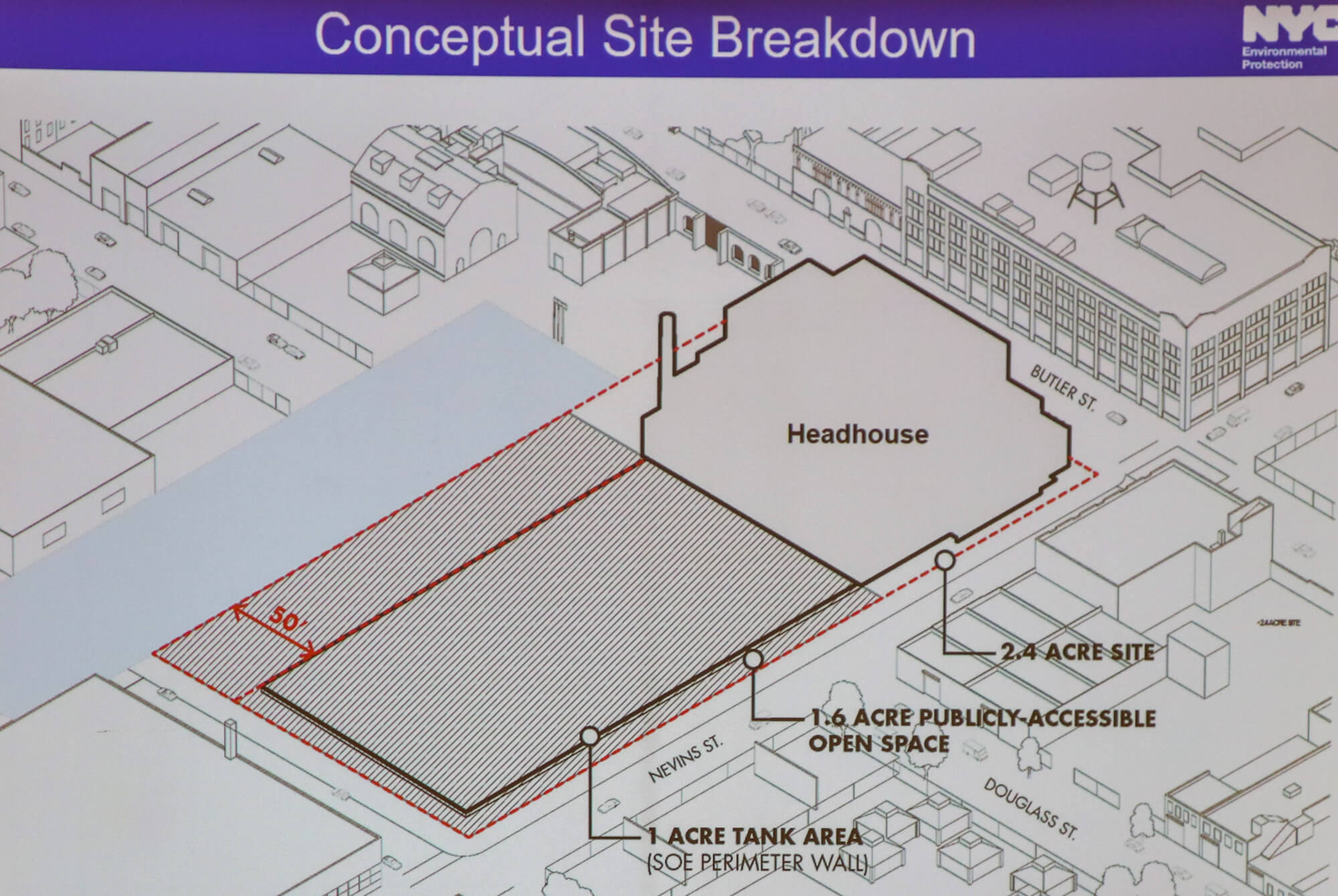
This space will sit largely over the tank, which will take up roughly an acre, as well as a 50-foot gap between the tank and the canal and space closer to the street.
Selldorf Architects is behind the overall design, working with landscape architecture firm DLANDstudio and engineering firms Hazen and Brown and Caldwell. The internationally recognized architecture firm has won awards for its design for a recycling facility in Sunset Park.
In renderings that were shown to the audience — a gathering of roughly 50 people that included local residents and representatives for local politicians, agencies and a crew of documentary filmmakers involved in the project — the public space will have large green areas wrapped in long benches and wide walking areas.
For inspiration, a DEP rep said, they looked to other open areas such as Hudson River Park, the High Line, Brooklyn Bridge Park and the East River Waterfront Esplanade.
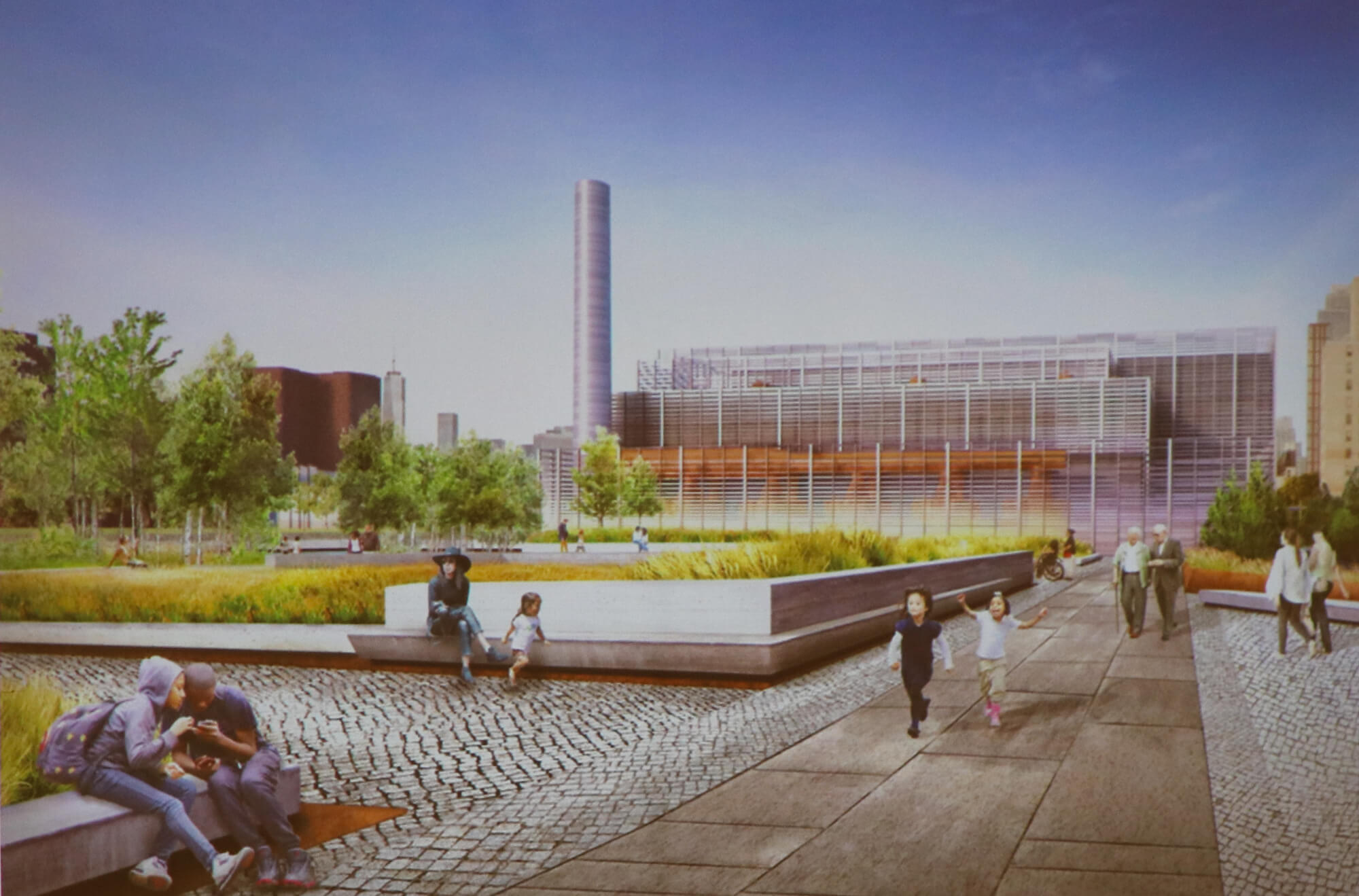
The design of the headhouse, which will replace the 1913 Beaux-Arts pumping station building known as Gowanus Station, will include what Alicia West, Director of Public Design Outreach for the DEP, called a “cloak” around the building that will allow passerby to partially see the machinery inside. They are looking at using terra cotta — a nod to the architecture of the Gowanus Station — for this exterior shell, she said.
Many at the meeting had questions about what they were being shown. One resident suggested more shaded areas be added to the design, while another hoped to see more green space.
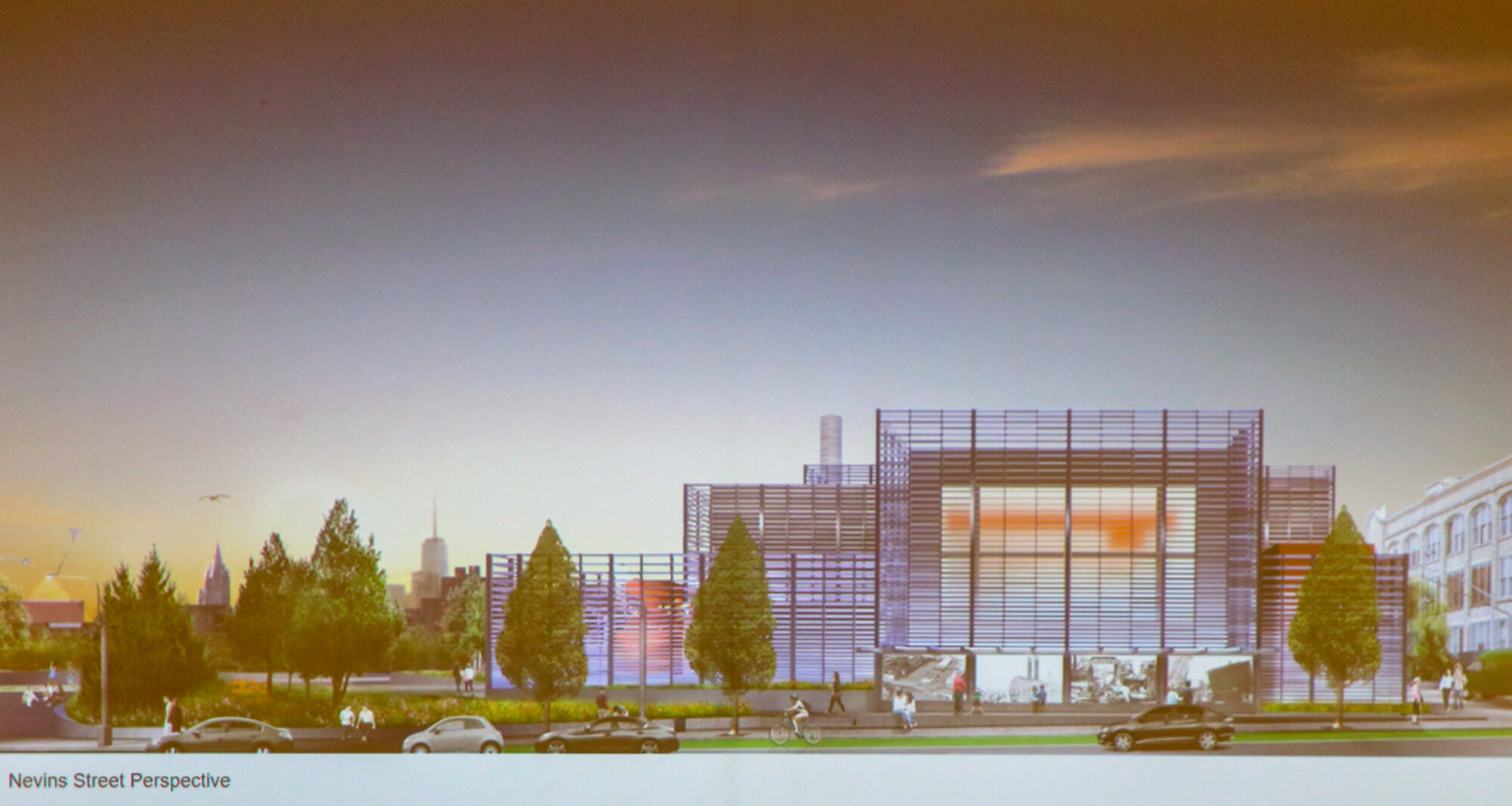
Owen Foote, treasurer and cofounder of the Gowanus Dredgers, commented that the park, as it was presented in the renderings, had no “social space.” He suggested adding elements that would encourage community engagement, and leaving room for the artists who live in the area, possibly to sell or display their work.
This was echoed by Sabine Aronowsky of the Fifth Avenue Committee, who wanted more inclusion in the public space. She specifically asked for barbecue and picnic areas, which are something members of community have requested.
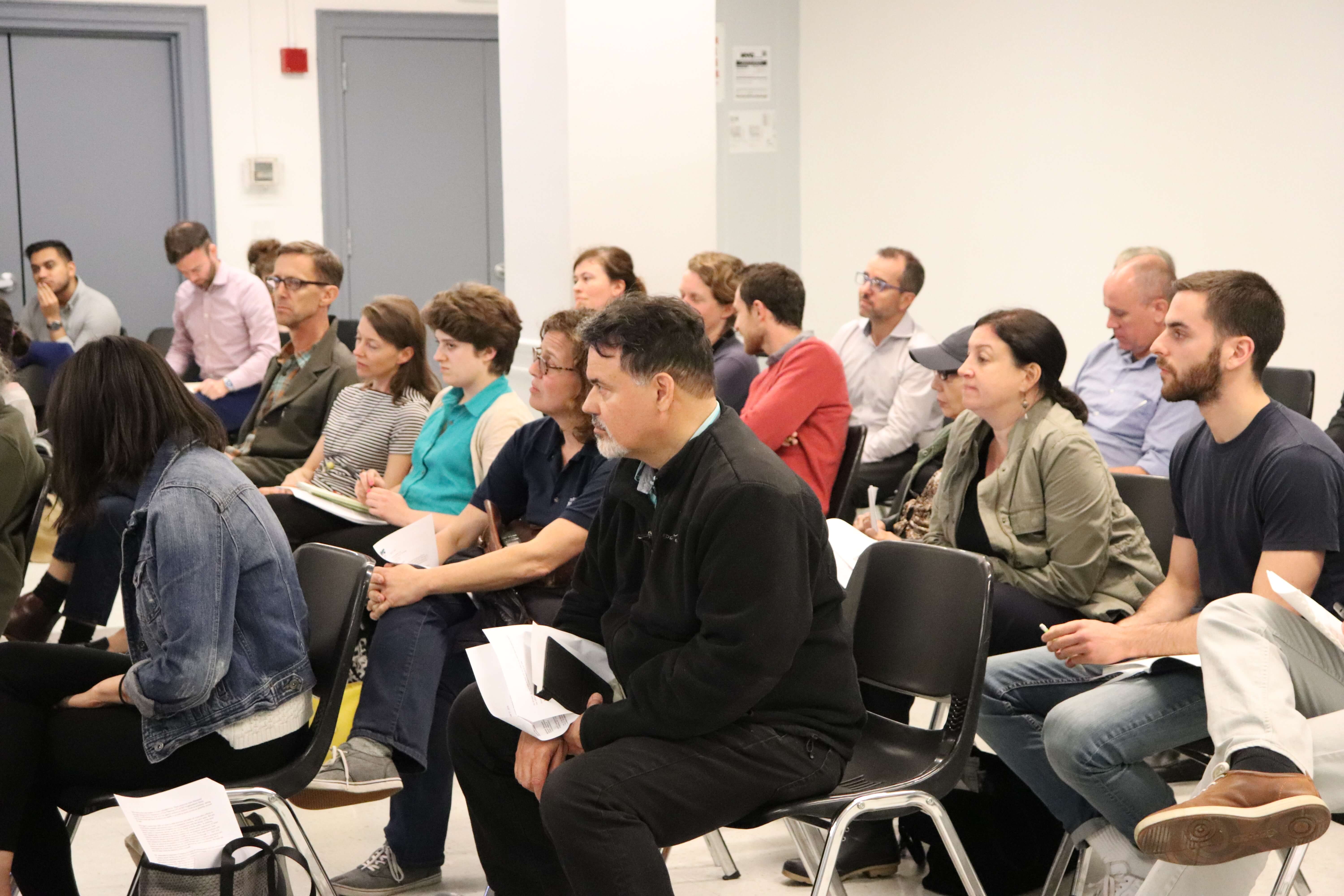
Others were less concerned with the design of the public space and more with its effects on the Gowanus Station. At various points in the meeting, members of the DEP said that keeping the building was “not feasible” because of “deteriorated conditions,” which received pushback from residents.
Levin, during his opening remarks, backed the DEP’s claims, saying he believed they had done all they could to attempt to save the building.
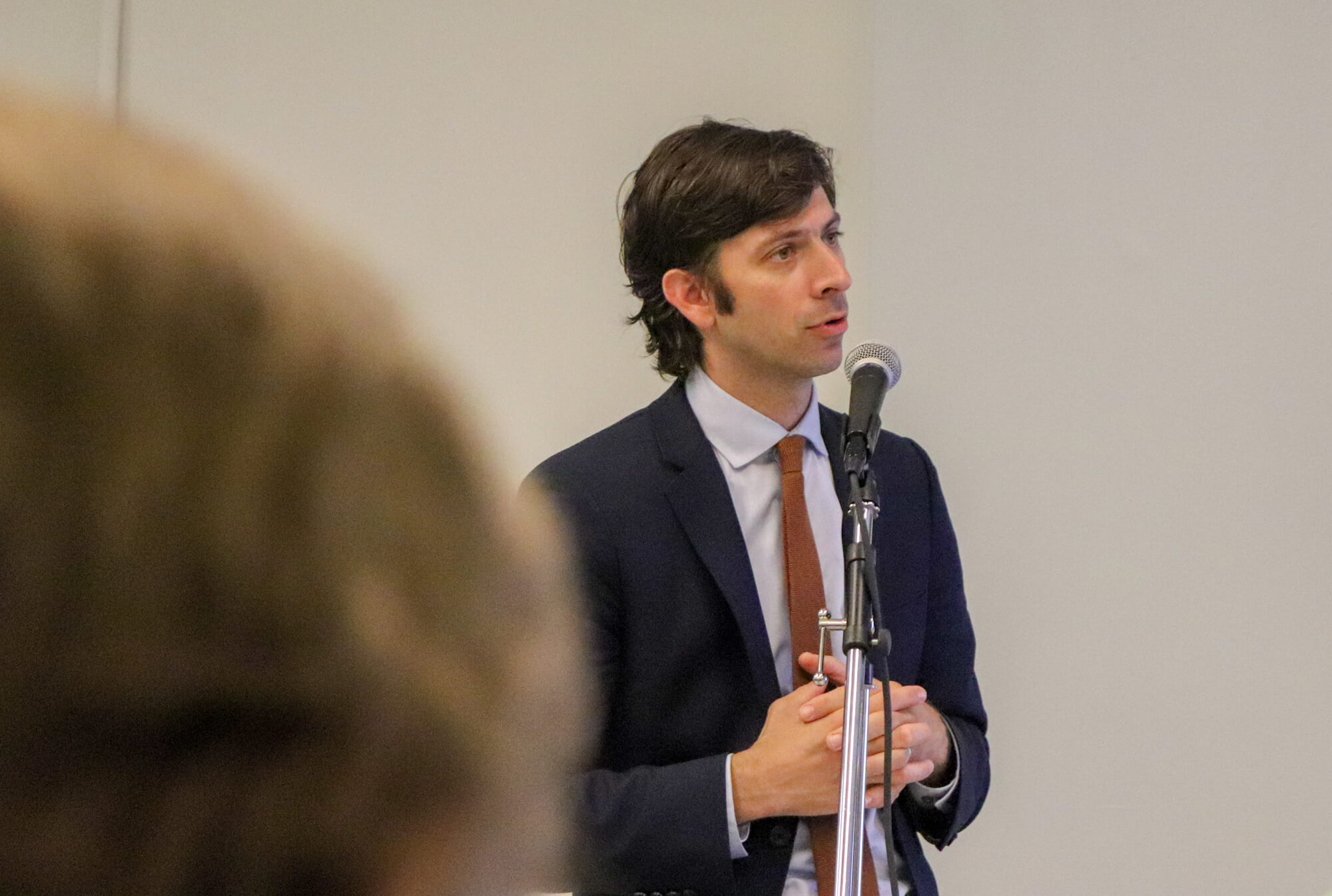
But not everyone was convinced.
“I don’t like the modern design of the building,” said Glenn Kelly, a member of Community Board 6. He suggested keeping the facade of the building, which Gowanus resident Brad Vogel also said during his remarks.
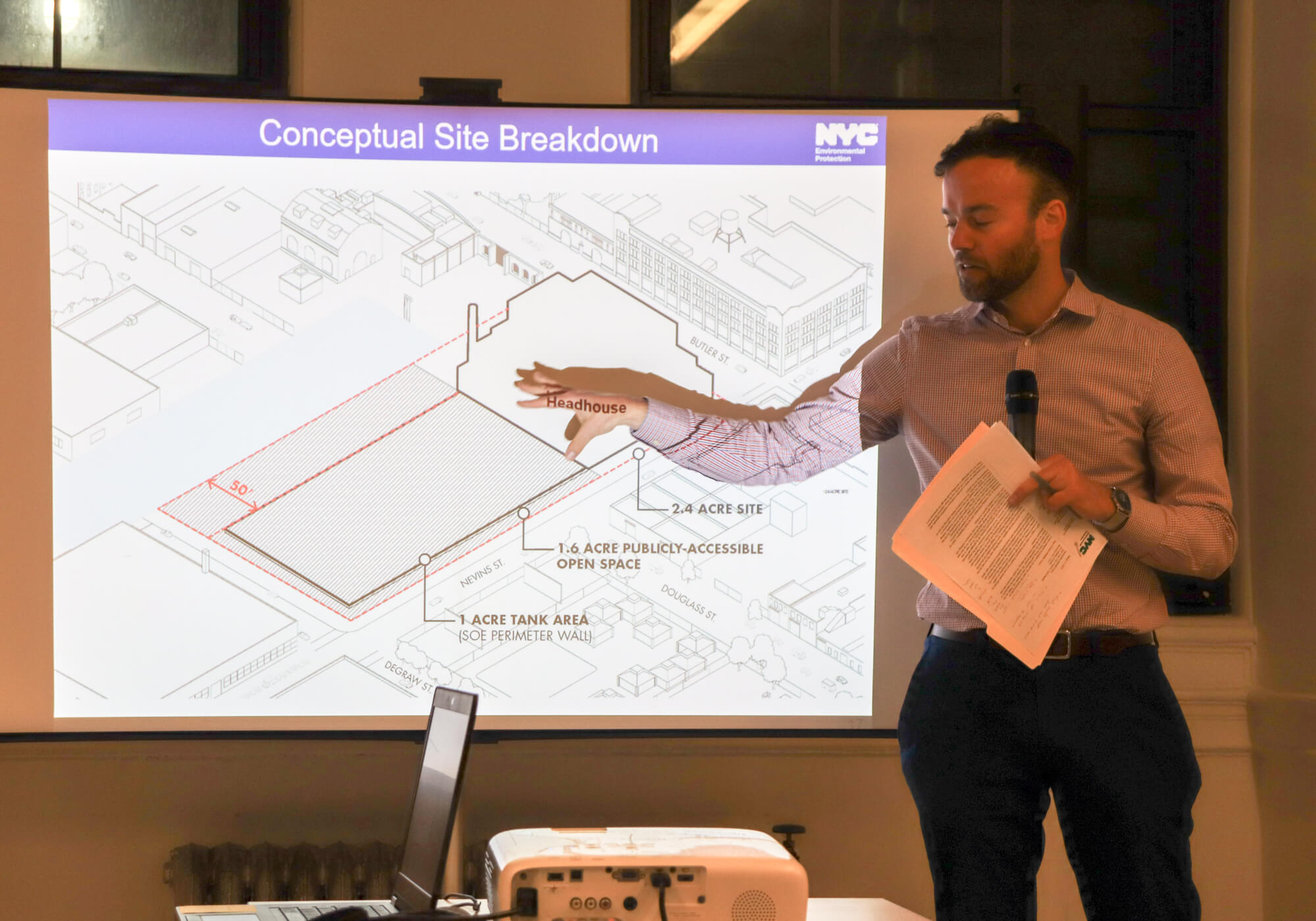
Vogel also had another suggestion, which was to move the headhouse down, leaving room to save the Gowanus Station and sacrificing a “sliver” of the public space that is being offered.
Despite the benefits the public space offers the community, some think it comes at the price of neighborhood character. “The proposed building has no connection to the Gowanus area,” said Marlene Donnelly, a member of community organization FROGG, or Friends and Residents of the Greater Gowanus.
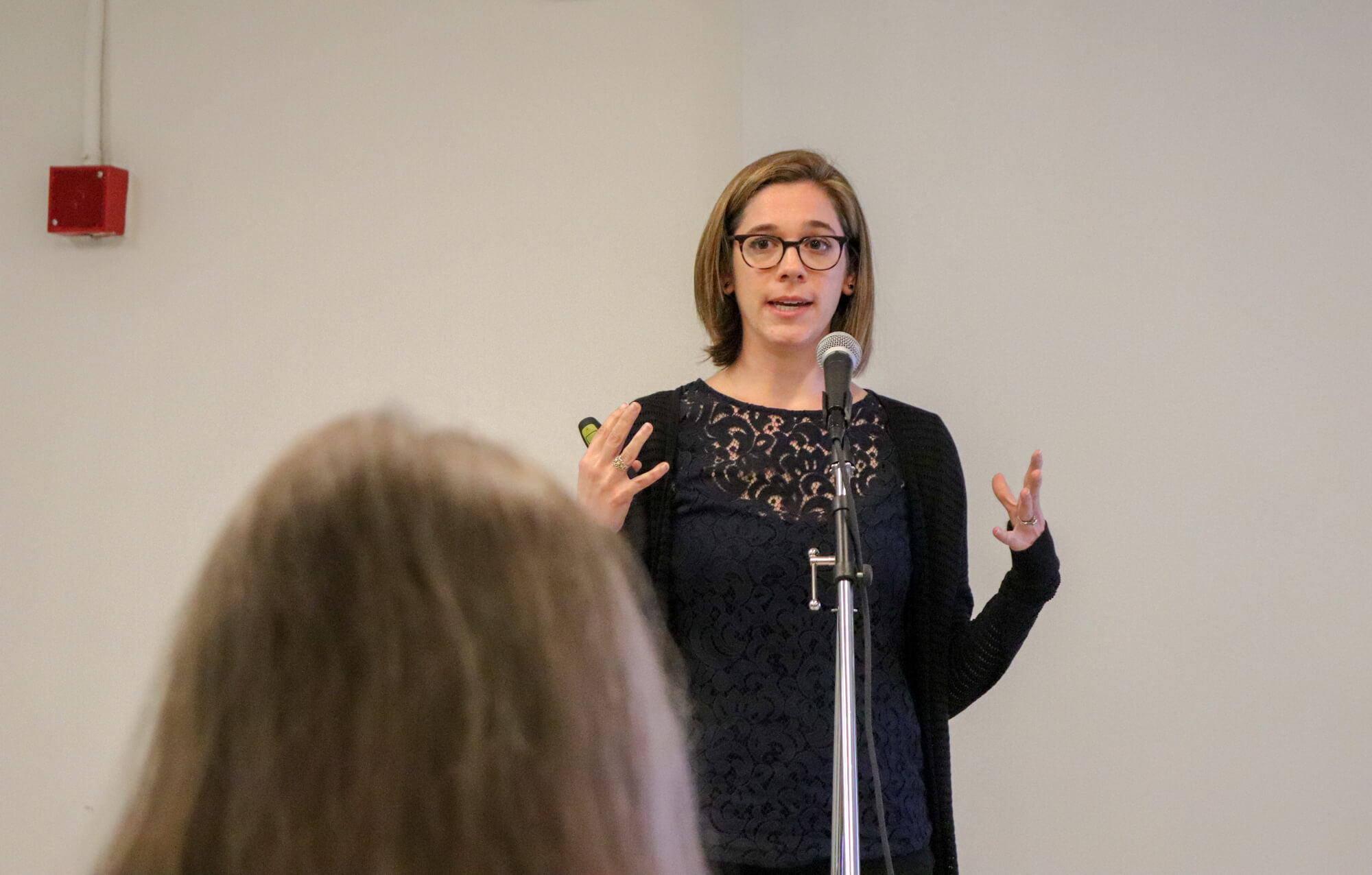
As was stressed by the DEP, the proposal was just that, and they were looking for community input. Adjustments will be made, and further proposals will be presented, they said. But what those changes will be, and how they reflect the various, and sometimes conflicting, concerns of the residents remains to be seen.
Related Stories
- Locals Question $1.2 Billion Cost of Gowanus Canal Tank Project, Say Gowanus Station Can Be Saved
- City Council Greenlights Demolition of Historic Gowanus Station Despite Locals’ Vigil to Save It
- Gowanus Residents Question the Most Polarizing Issue of the Canal Cleanup
Email tips@brownstoner.com with further comments, questions or tips. Follow Brownstoner on Twitter and Instagram, and like us on Facebook.

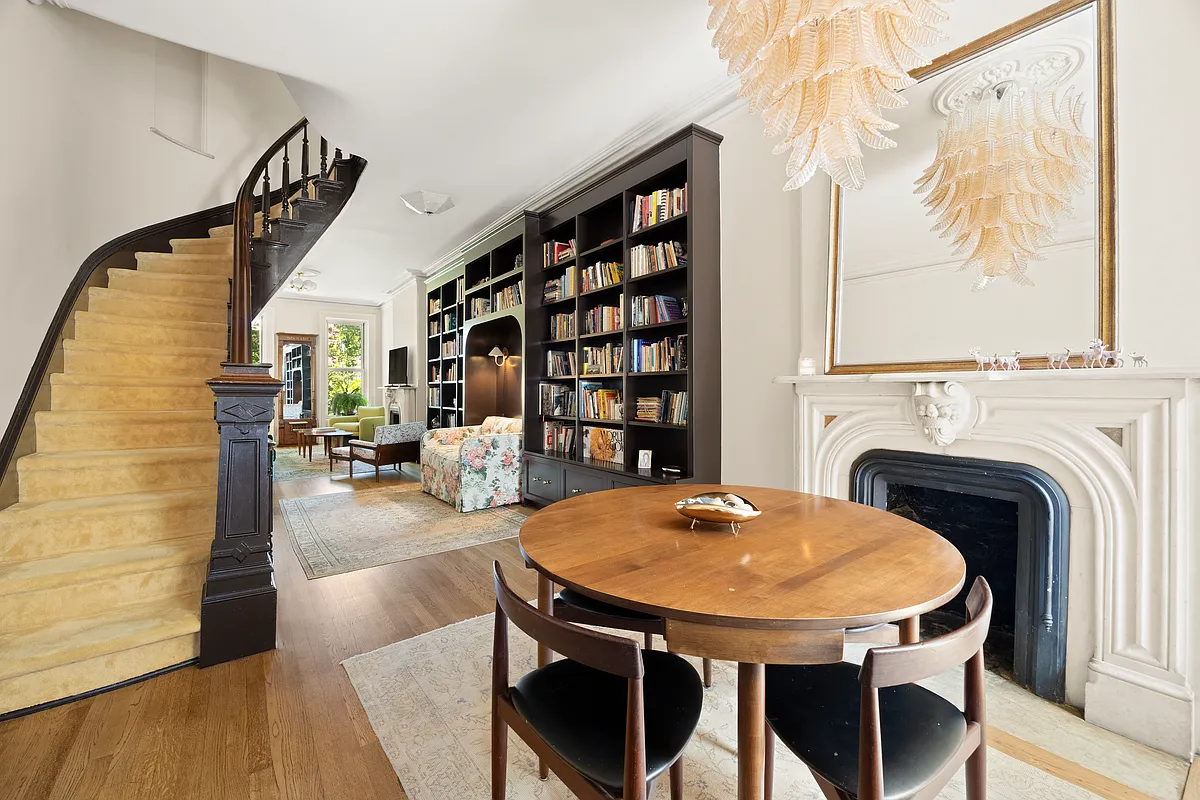
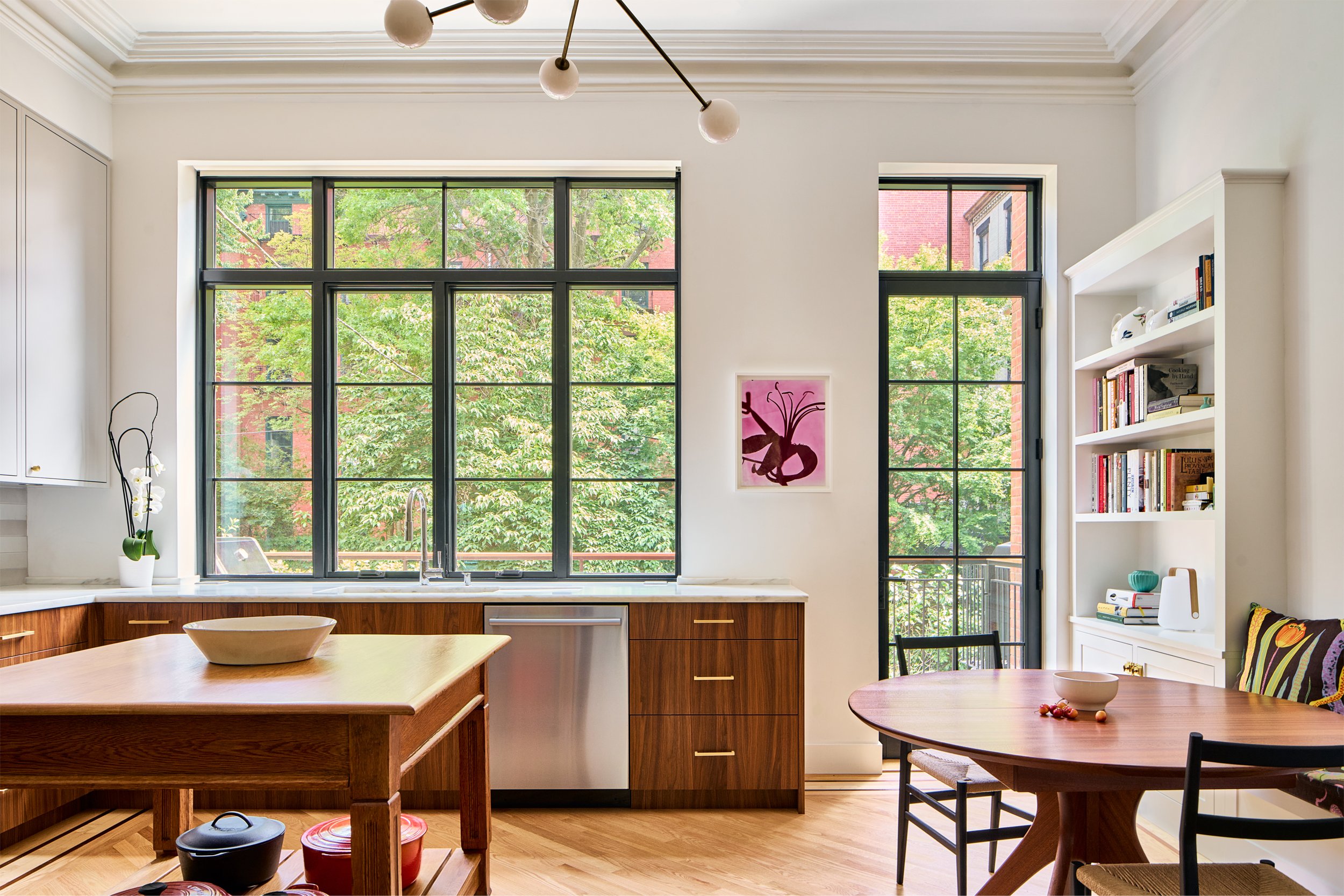
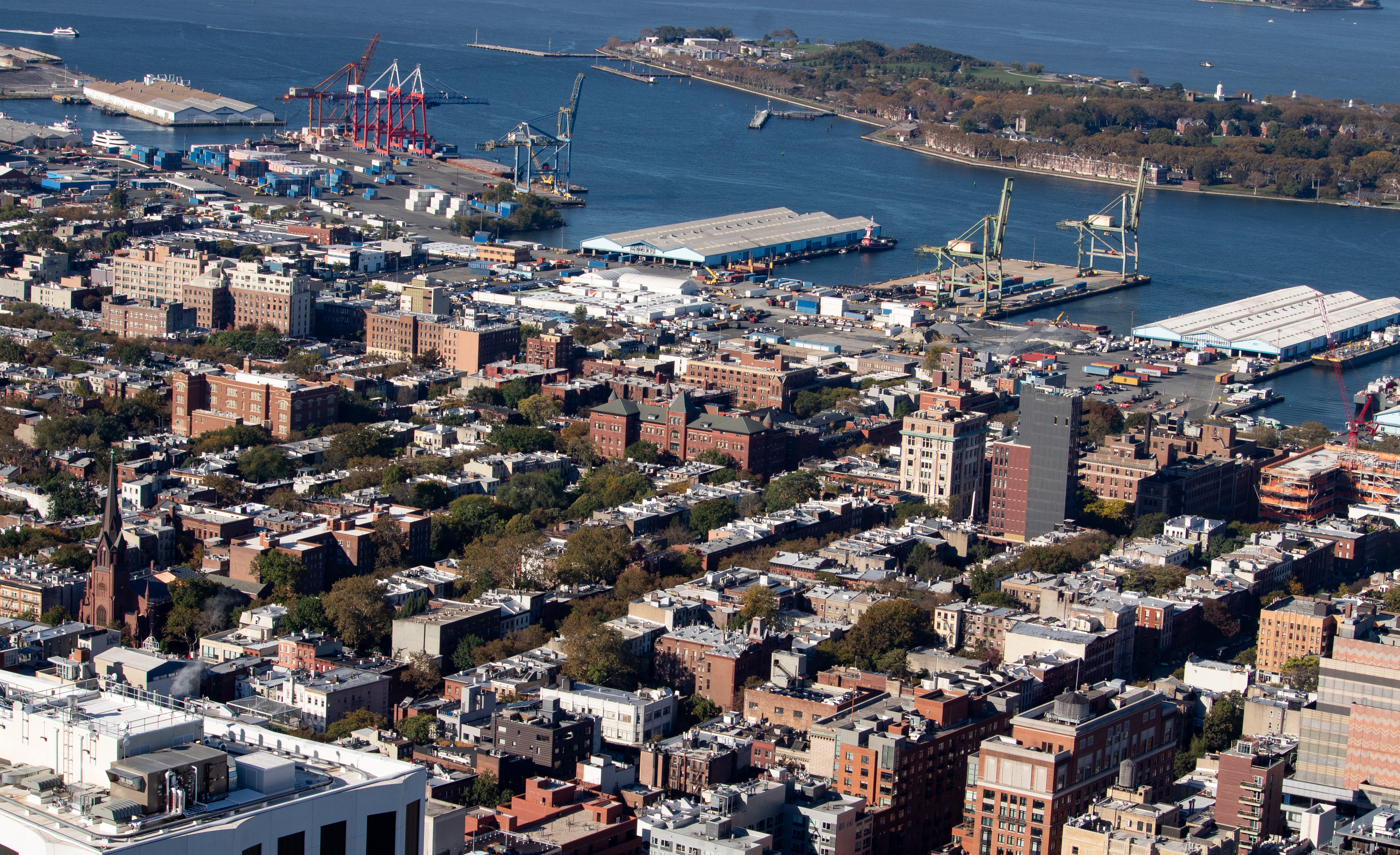
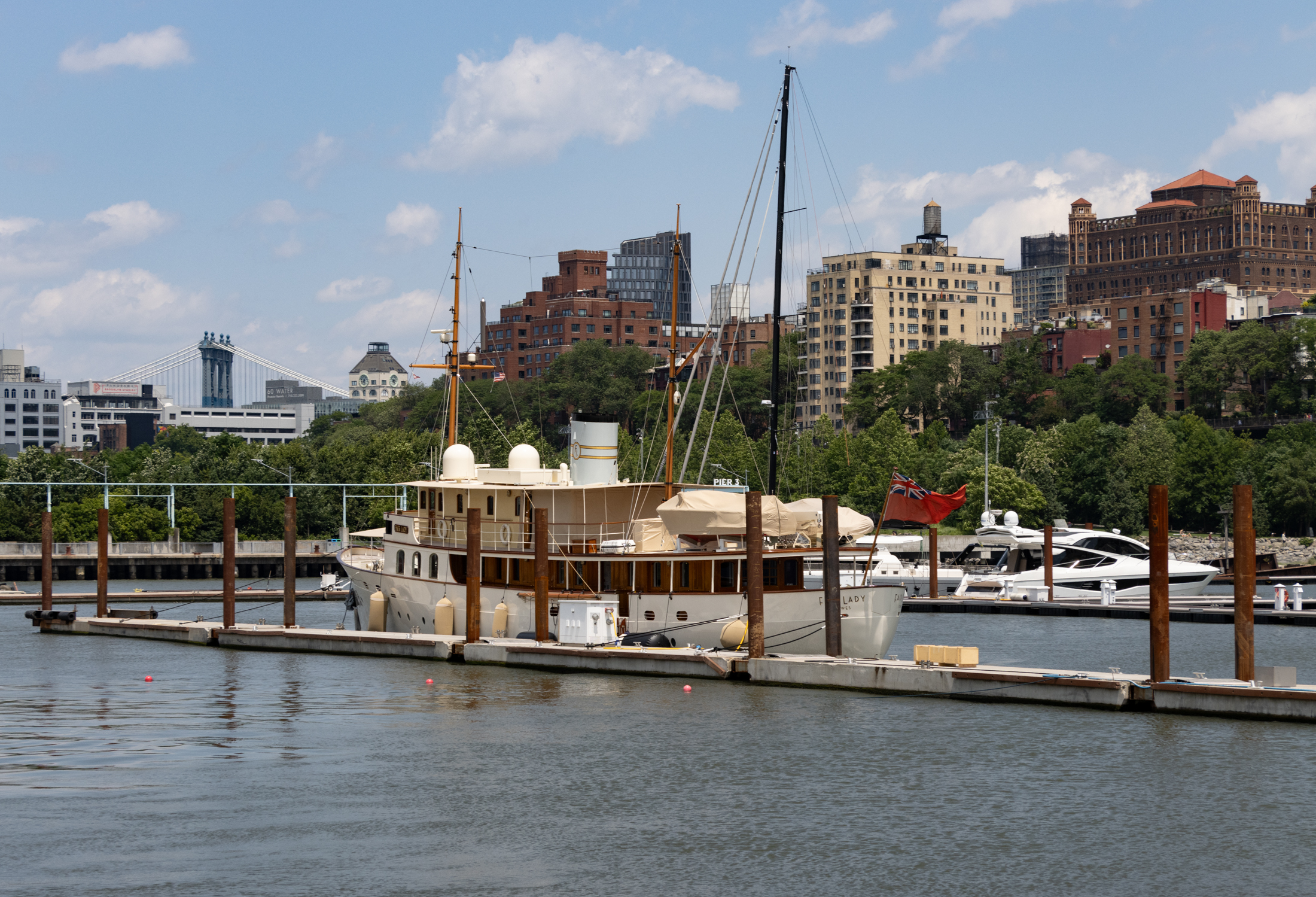
What's Your Take? Leave a Comment